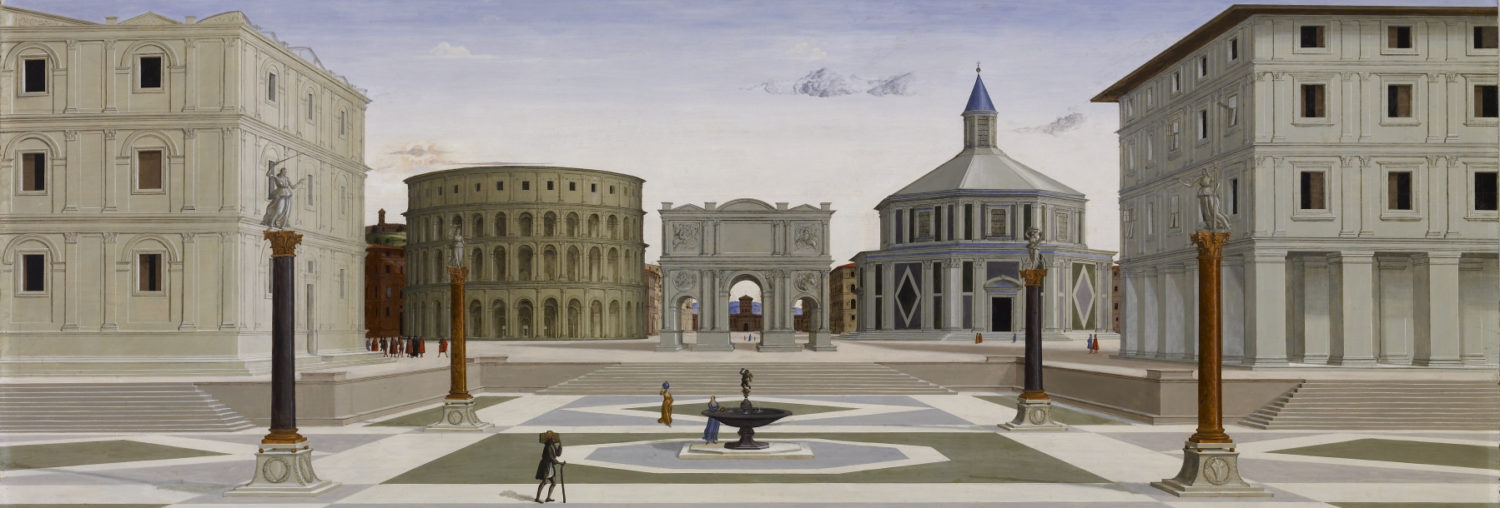This image has been gathered from the website «Web Gallery of Art» and corresponds to Bellotto’s collection of artworks referred to Dresden city. Neumarkt is the square that it is represented in this picture. It is placed in downtown, old quarter, close to a meander that the river Elba does. The work, entitled «New Market Square in Dresden», was painted in 1750 by oil on canvas and its measurements are 136 x 236 cm. Now, this painting is preserved at the Gemäldegalerie, in Dresden. The author is Bernardo Bellotto (Venice, 1721 – Warsaw, 1780), who was an Italian painter and engraver specialised as a vedutista, it means, a painter of urban landscapes. Bellotto began his artistic formation when he was 15 years old, in the workshop of his uncle Giovanni Antonio Canal, Canaletto. There he perfected the painting of vedute. He travelled a lot and worked for the royalty in Dresden, Vienna and Munich, but he eventually lived in the court of Estanislao II Poniatowski, in Warsaw.
Dresden is the capital of the Saxony, Germany. Located in Europe center, it is an economic important place since it had a great relevancy in trade. Thanks to the Elba river, the city could have raw materials for its economic development, many of them extracted directly from the river and others by using its water for cropfields and water supply. Owing to these factors, the city could develop trade across the river and more beyond to the sea. As a result of this, the middle class experienced a rapid growth aimed to be the dominant class in Modern Times. After that, many reformations were done with the addition of new buildings highlighting the power of the bourgeoise and the socio-economic development of the city.
The city had an irregular layout from medieval times but in the Baroque era it experienced an important urban development. As a consequence, the ancient buildings were knocked down to be able to construct new squares and open spaces with a more regular plan, as it appears in the picture. Thus, Neumarkt looked like being more spacious, squared and spectacular thanks to the openings among buildings, the wide area in the centre and the baroque façades of the new palaces. This renovation also contributed to enlarge the urban space. It is true that Dresden is so-called the «Florence of Elba» due to the monumental importance of its Baroque type of buildings, constructed from the century XVII onwards.
In this picture it is possible to observe how the fundamental activity in the Baroque era was trade. Also the importance of Lutheran religion and its historical importance for the whole Germany. As an example, the most significant construction displayed in the background, on the right, is the Frauenkirche. This is a Protestant church, with a central ground plan constructed between 1726 and 1743. During the Second World War it was almost totally destroyed because of Dresden Bombing, in 1945. The German Democratic Republic supported its ruins as a monument that remembered the destruction of the war. After the Fall of Berlin Wall, its reconstruction was begun in 1994 and finished in 2005. Nowadays, it is a symbol of peace. Its dome of round stone dominates the whole city and contributes to give an inspirational perspective to the narrow streets and the irregular plan of the city. Also, in Neumark, there is a statue that conmemorate the importance of Martin Luther and how Dresden is one of the most emblematic places for the Protestantism.
Another important building is the Stallhof, that was part of the Royal Palace complex and served, in the 17th Century, as headquarters and scenary of horse spectacles. It was finished in 1591 by Cristiano I. Today it is still used for cultural events as well as the Christmas Market, the Striezelmarkt, which is one of the most ancient and large markets of Germany. Occasionally, spectacles of horses and theatre events take also place here.
Lucía Arias García

